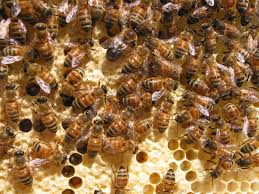Bees play a pivotal role in pollinating ecosystems and sustaining global food systems. As stewards of these vital insects, beekeepers must prioritize methods that safeguard bee health during honey harvesting. Traditional practices, while effective, can inadvertently harm colonies. This guide outlines ethical, bee-friendly techniques to harvest honey while ensuring the well-being of these essential pollinators.
1. Preparation: Timing and Equipment
Timing the Harvest
Harvest honey during peak nectar flow, typically late spring to early fall, when bees are active and floral resources abound. Avoid autumn harvesting, as bees require winter stores. Conduct inspections during warm, sunny days when bees forage, minimizing hive disturbance. Use a refractometer to check honey moisture content (ideally below 18%) to prevent fermentation.
Gentle Equipment
Opt for smooth, non-abrasive tools. Replace harsh bee brushes with alternatives like fume boards or bee escapes. Use a high-quality smoker with cool, natural fuels (e.g., pine needles, burlap) to calm bees without overheating. Ensure protective gear (veil, gloves, suit) is secure to avoid defensive reactions from bees.
2. Bee-Friendly Harvesting Techniques
Minimizing Hive Disturbance
- Smoker Use: Apply smoke sparingly at the hive entrance and under the lid. Over-smoking stresses bees; 2-3 puffs suffice.
- Frame Removal: Gently pry frames using a hive tool, avoiding sudden movements. Check for the queen to prevent accidental injury.
Bee Removal Methods
- Bee Escapes: Install a one-way Porter escape 24–48 hours pre-harvest. Bees exit the super but cannot return, reducing manual removal.
- Fume Boards: Non-toxic repellents (e.g., butyric acid) encourage bees to vacate supers. Place boards 10–15 minutes before extraction.
Modern Innovations
- Flow Hives: These allow honey extraction via turnkey mechanisms, minimizing hive opening. Critics note potential comb damage if misused, so follow manufacturer guidelines.
- Top-Bar Hives: Comb-friendly design enables cutting honey sections without destroying entire structures, ideal for small-scale beekeepers.
3. Honey Extraction Best Practices
Gentle Processing
- Centrifugal Extractors: Use radial models at low speeds to preserve comb integrity. Return frames promptly for bees to repair.
- Crush-and-Strain: For comb honey, crush frames into a mesh bag. Though comb is destroyed, this method suits foundationless hives.
Comb Preservation
Reuse drawn combs to save bees energy. Store combs in pest-proof containers with natural deterrents like neem oil.
4. Post-Harvest Hive Care
Super Management
Return “wet” supers post-extraction for bees to clean residual honey. Remove within 48 hours to prevent robbing. Ensure hive components are securely reassembled.
Winter Readiness
Post-harvest, assess honey stores. Supplement with sugar syrup (2:1 sugar-water ratio) if stores are insufficient. Avoid honey substitutes, which can harbor pathogens.
Health Monitoring
Check for pests (Varroa mites) and diseases. Use integrated pest management (IPM) strategies, such as drone comb removal or oxalic acid treatments, avoiding synthetic chemicals.
5. Ethical Considerations and Sustainability
Sustainable Practices
- Leave Adequate Honey: Retain 60–70 lbs of honey for winter survival.
- Chemical-Free Environments: Plant diverse, pesticide-free forage. Avoid miticides; opt for organic acids if necessary.
Certifications and Education
Pursue certifications like Certified Naturally Grown to adhere to ethical standards. Engage with local beekeeping associations for workshops on humane techniques.
6. Case Studies and Innovations
- Urban Rooftop Apiaries: Cities like Paris and Toronto host hives using Flow Hives, demonstrating urban sustainability.
- Community Projects: The Hive Haven initiative in Oregon teaches low-impact harvesting, reporting 90% colony survival rates post-harvest.
Here are 10 frequently asked questions (FAQs) about harvesting honey without harming bees, along with brief answers to help:
🐝 FAQs: How to Harvest Honey Without Harming Bees
Can I harvest honey from a weak or new hive?
No. New or weak colonies need time to build strength and reserves. Only harvest when a hive is strong and has surplus honey.
When is the best time to harvest honey?
The best time is late summer or early fall when bees have had time to build up enough honey stores and nectar flow is strong.
How do I know if there’s enough honey to harvest?
Check that the honeycomb cells are at least 80% capped (sealed with wax). This means the honey is ready and moisture levels are safe.
How can I avoid stressing the bees during harvest?
Work gently and calmly, use a smoker to ease the bees, and avoid sudden movements. Choose a warm, calm day when bees are less aggressive.
Do I need to take all the honey from the hive?
No. Always leave enough honey for the bees to survive the winter — typically 60–80 pounds, depending on your region.
What tools are bee-friendly for harvesting?
Use a bee brush or gentle escape boards instead of harsh blowers. Flow Hives also allow for minimal disturbance.
What is a Flow Hive and is it better for the bees?
A Flow Hive lets you tap honey directly without opening the hive. It reduces disruption but should still be monitored like any hive.
How do I extract honey without crushing bees?
Use a bee escape board or gently remove bees with a brush before taking frames. Always check frames before spinning to avoid harming any bees.
Is smoking bees cruel?
No — when used properly, smoke calms bees by masking alarm pheromones. Use it sparingly and responsibly.
How often can I harvest honey without harming the colony?
Usually once or twice a year. Overharvesting can weaken the colony and should be avoided.

